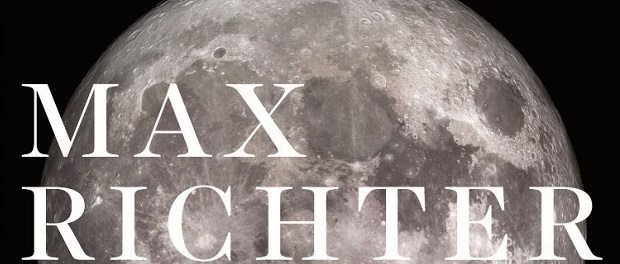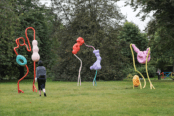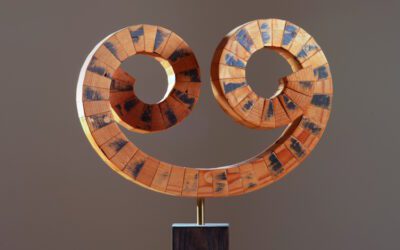[dropcap style=”font-size:100px; color:#992211;”]T[/dropcap]he Barbican makes consistent efforts to present the works of respected contemporary composers such as Henryk Górecki and Louis Andriessen, yet despite presenting their work in innovative and attractive ways, such concerts don’t tend to sell out.
By contrast, the relatively young Britsh composer Max Richter drew capacity audiences for two nights and queues of people waiting for their CDs and vinyl to be signed. From a strict, avant-garde perspective this could seem like cause for regret. Richter’s music commits the cardinal sin of accessibility and doesn’t bring the bracing thrill of militancy that other (often older) composers do. Yet if the success of music such as Richter’s (which is often openly romantic) helps cross-subsidise the performance of more challenging composers it can be more than just crowd-pleasing.
The pre-concert atmosphere felt more like a gig than a concert. Long queues for the bars, merchandise, a packed hall and a steady flow of dry ice around the stage. The focus of tonight’s show is a 90 minute version of his recent eight hour composition Sleep, which nobody can accuse of not being conceptually if not always tonally ambitious. Before that we get his interesting 2004 work The Blue Notebooks.
Perhaps having the composer on stage directing the proceedings helps, but it was clear from the start that this was a very skilled ensemble. The atmosphere was greatly enhanced by stunning spotlighting and the dry ice that was visually attractive but didn’t distract from the music in the way that video can sometimes do. The only moments when the spell was broken were the slightly awkward transitions between sections when a cellist had to move over to a second keyboard position and back again, but the effect of this disruption never affected the perception of the music for too long. One element that makes the piece instantly distinctive are the spoken word passages, which could easily have been triggered by a sample, but which were convincingly read live by a narrator.
At its best, the music had a stately power, producing a melancholy but serene effect, subduing my avant-gardeist critical reservations about the conventional nature of the music. It surely isn’t dissonant or disruptive enough for some (not least the two older audience members commenting a little dismissively about the size of the crowd and the number of ‘hipsters’ present) but it’s unquestionably elegant and memorable music and it’s clear why so many respond so well to it.
In these days of shortened attention spans, playing even a 90 minute extract of an eight hour piece is already a bold statement (and perhaps itself a suitable remedy for short attention spans). Judging from audience reactions it worked much better at captivating attention over a long period than as a lullaby (its stated mission). In the packed hall I only spotted one concert-goer who’d succumbed, perhaps deliberately, and sprawled out in his seat deep in slumber. So in this respect it could be seen as both a success and a failure.
Interestingly, the full work was performed overnight three times in Berlin which raises the question of why it wasn’t possible to do so in any British venue. Perhaps things really do move more slowly in Berlin and a full performance would go against the grain of London’s partly-dishonest status as a 24 hour metropolis.
The contrast between the two pieces is subtle but clear. While the first is more compositional and aesthetic, the second is more conceptual-functional. It was informed by scientific advice on sleep patterns and the need to induce sleep seems to be reflected in its structures. Richter has a a post-minimalist style in the vein of the more romantic moments of Philip Glass’ piano works or Michael Nyman’s 1990s soundtracks. In sleep mode this style is stripped down and stretched out (very stretched out). Simple piano and string phrases are repeated for long periods while other elements wash around them.
Although the sound is generally excellent, one element that didn’t fully convince is the sometimes over-powerful electronic bass pulses, which stood out as being not fully integrated into the flow. It’s possible that it was simply mixed too high, but it may also have been a paradoxical counter-sleep strategy, designed to keep the audience at a minimum level of alertness.
The strengths of the quartet shone through in the slow, piano-led ‘Dream 3 (in the midst of my life)’.
A skilled soprano led ‘Path 5 (Delta)’ in which her voice was re-sampled as she continued to sing over it and the piece intensified.
While technically impressive and beautifully performed, at such moments the spectre of New Age muzak stalks the music in a way that it might not if there wasn’t the functional soporific imperative underlying it. A certain piousness can creep in that would appear to confirm the worst fears of avant-gardeists, that the overall work is no more than a lulling seduction away from the path of bracing innovation. Yet there is much more to Sleep than this interpretation allows for and for long minimalist passages the spectre is kept at bay and time was allowed to unfold in a graceful way that left the audience euphoric.
It is knowingly functional but does possess a core aesthetic and even in a reduced 90 minute form, it made for a memorable and even (perhaps unintentionally) thought-provoking evening.

From Speak and Spell to Laibach.






















